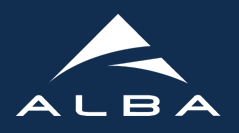Core Level Emission Analyzer and Reflectometer (CLEAR)
Concept

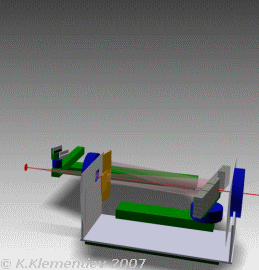
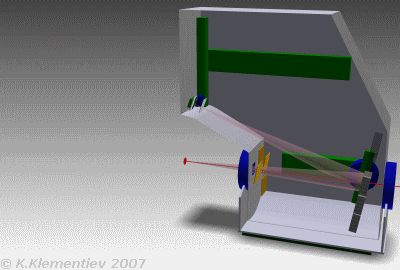
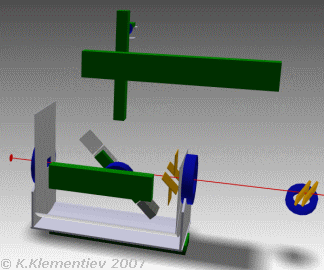
The pictures above can be viewed in 3D using this file (it has 6 animated sequences) loaded by Deep View (free!).
- Compatible with common in-situ cells, cryostats and a magnet, with no side window required.
Fluorescence is collected in back scattering direction. Thus a) no additional side window is required in an in-situ cell or a cryostat, which means a simplified cell design with more uniform heating (cooling) and b) there is no depth-related fluorescence source broadening as at the usual 45º incidence, which means a better energy resolution. - Static acquisition, no θ–2θ scans.
The geometry allows energy dispersive images in two scales: some eV (due to diced crystal) and some hundreds eV (due to in-Rowland circle position of the sample). Thus no θ–2θ scans are required. The static acquisition alleviates requirements for mechanical accuracy. - In-situ change of crystals.
3 Johansson-like diced Si crystals: (111), (220) and (400) splitted into two halves with (1.2–1.5 mm)2 facets. The crystals cover the energies 2–~28 keV (θ = 35–80º) with energy resolution better than the width of the corresponding Kα lines. - Sagittal crystal bending, 1D detector.
Dynamical sagittal crystal bending, which depends on Bragg angle and in-circle coordinate, allows small sagittal image size. Thus a 1D, not 2D, detector is required. Moreover, at dynamical sagittal bending every crystal column remains on its Rowland circle, maintaining good energy resolution also at relatively small Bragg angles. - Serves for RIXS, reflectometry and polarimetry.
The movable tank allows for insertion of large sample infrastructures (magnet, cryostates, chemical cells), enables completely windowless operation and also allows using the spectrometer as reflectometer and polarimeter.
See the Conceptual Design Report for more information.
The sagittal bending and the in-Rowland sample positioning are illustrated in the following two animations:
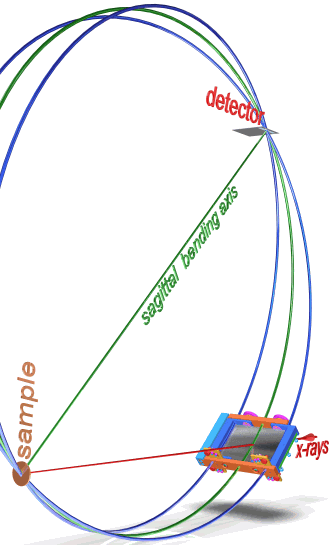
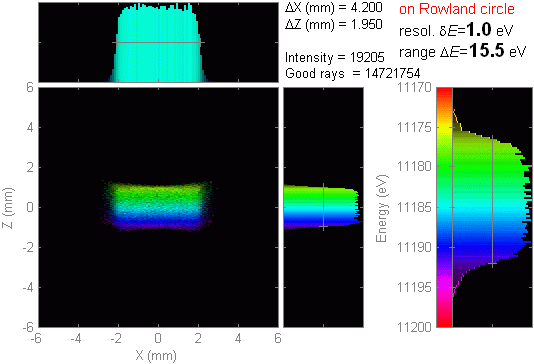
Preliminary design
General view
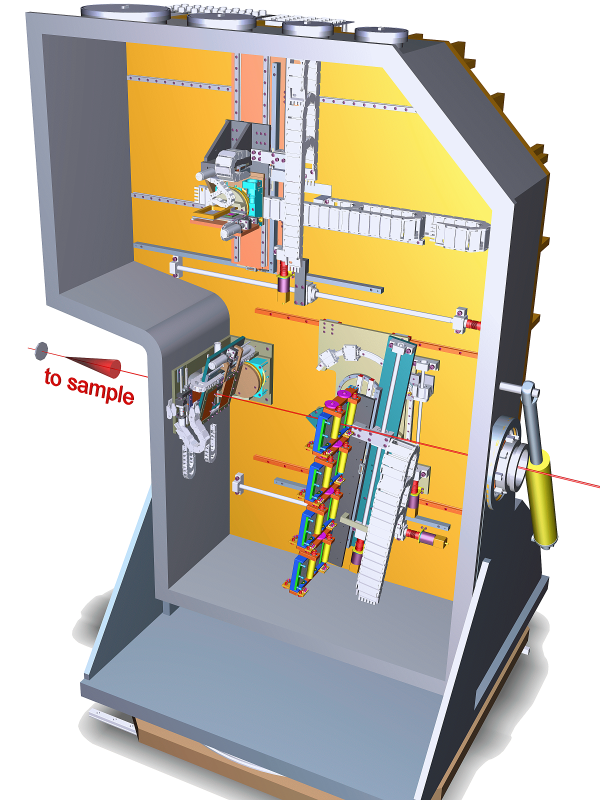
Diced Johansson crystal with bender
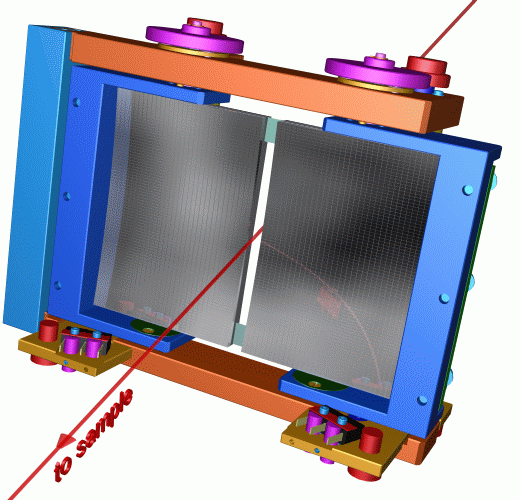
Johansson crystal technology
1. Incomplete cuts of concave R=1000 crystal in sagittal and complete cuts off in meridional direction:
2. a) turn upside down, put on the reference R=500 cylinder, b) clamp to it, c) glue the support bar:
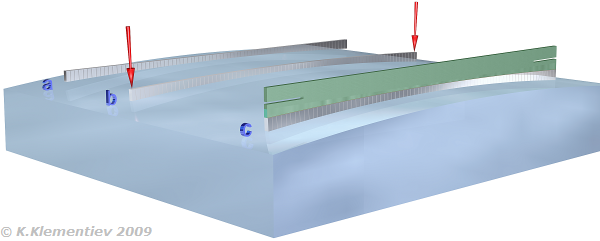
3. Stack the crystal columns and put onto bent support strips.
